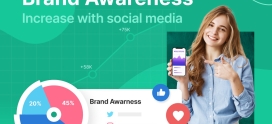
Social Media Impressions vs Reach
Deciphering Impressions vs. Reach: Understanding Key Metrics Across Social Media Platforms
In the realm of social media marketing, tracking and analyzing metrics are essential for gauging the performance and effectiveness of campaigns. Two fundamental metrics that often cause confusion are impressions and reach. Understanding the distinction between these metrics is crucial for optimizing strategies and achieving desired outcomes. In this article, we’ll delve into the differences between impressions and reach across popular social media platforms like Facebook, TikTok, YouTube, Instagram, and Snapchat.
 Impressions vs. Reach: What’s the Difference?
Impressions vs. Reach: What’s the Difference?
- Impressions: Impressions refer to the total number of times a piece of content is displayed on a user’s screen. This includes every instance the content is shown, whether it’s viewed or not. For example, if a post appears in a user’s feed twice, it counts as two impressions, regardless of whether the user engages with it.
- Reach: Reach, on the other hand, represents the total number of unique users who see a piece of content. Unlike impressions, reach measures the actual number of individuals reached by the content, regardless of how many times they see it. Each user is counted only once, even if they view the content multiple times.
Understanding Impressions and Reach on Social Media Platforms
Let’s explore how impressions and reach are measured and interpreted on popular social media platforms:
On Facebook, impressions indicate the total number of times a post is displayed in users’ feeds, whether organically or through paid promotion. Reach, on the other hand, represents the unique number of users who see the post. A single user may contribute to multiple impressions but only counts once towards reach.
TikTok
TikTok measures impressions as the total number of times a video is displayed on users’ screens. Reach, meanwhile, represents the unique number of users who view the video. TikTok’s algorithmic feed may lead to multiple impressions per user, but each user is counted only once towards reach.
YouTube
Impressions on YouTube refer to the total number of times a video thumbnail is shown to users, either on the YouTube homepage, search results, or suggested videos. Reach represents the unique number of users who click on the video and start watching it. YouTube’s analytics provide insights into both metrics to assess video performance.
Instagram’s impressions indicate the total number of times a post or story is displayed to users. Reach represents the unique number of users who see the post or story. Instagram distinguishes between organic and paid reach, providing insights into how content is being distributed and engaged with by users.
Snapchat
Snapchat measures impressions as the total number of times a snap is viewed by users, including both organic and paid views. Reach, on the other hand, represents the unique number of users who view the snap. Snapchat provides detailed analytics on both metrics to assess campaign performance.
Utilizing Impressions and Reach for Optimization
- Content Strategy: Use impressions to gauge the visibility of your content and reach to assess its audience penetration. Tailor your content strategy based on insights derived from these metrics to maximize both exposure and engagement.
- Campaign Performance: Monitor impressions and reach metrics closely during marketing campaigns to evaluate their effectiveness. Adjust targeting, messaging, and ad spend based on performance data to optimize campaign outcomes.
- Audience Engagement: Analyze impressions and reach alongside engagement metrics (likes, comments, shares) to gain a holistic understanding of audience interaction with your content. Use these insights to refine your content strategy and foster deeper engagement with your audience.
Conclusion
Understanding the distinctions between impressions and reach is essential for accurately evaluating the performance of social media content and campaigns. While impressions measure the total number of times content is displayed, reach represents the unique number of users who see it. By leveraging insights from both metrics across platforms like Facebook, TikTok, YouTube, Instagram, and Snapchat, marketers can refine their strategies, optimize performance, and achieve their marketing objectives more effectively in the ever-evolving digital landscape.



